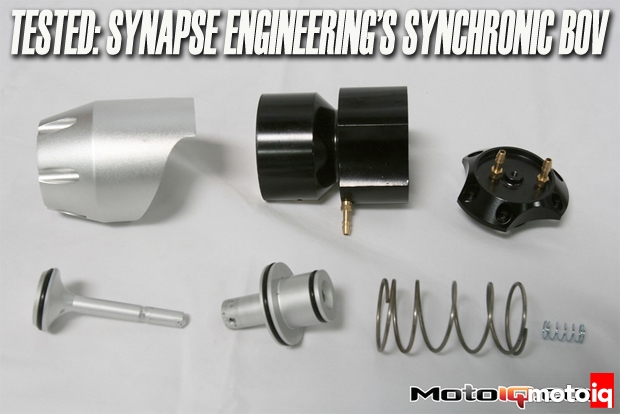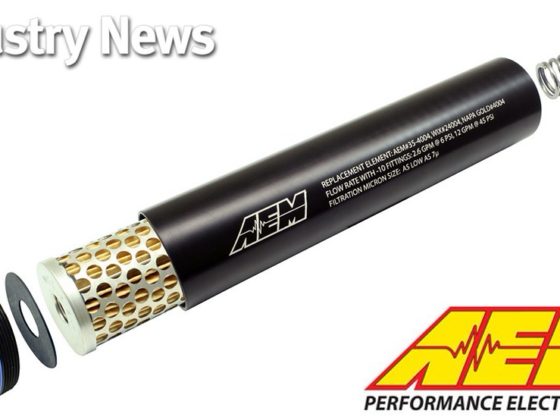,
We installed the DV on our Project EVO IX and found that it took all of about 5 minutes. After reading a few threads on the EVOM forum and talking to Peter we installed the DV in its fastest reacting configuration which is pull with the vacuum on port B. We used the larger area of port B because of our big Cosworth M2 cams. Peter told us that the valve is actually faster reacting on port B than using port A and B together because of the huge piston area for the vacuum signal to work on slows the valve response to changes in intake manifold vacuum.
 |
| We plumbed the vacuum signal to the outer and larger piston substrate, port B and installed the DV in pull position, to where boost pressure is pushing the valve closed. The DV can be installed in push or pull position and each way has greatly different characteristics and effects on driveability. In this way the DV has more tuneabitly options than the Synchronic! The DV fit our EVO as well as the factory piece did. We plumbed our vacuum and feed lines with Hose Techniques nomex silicone hose. |
We were still a little skeptical that a simple BOV could make that much performance difference, especially on an EVO IX which has a pretty good valve from the factory, but we were actually impressed within a few blocks of driving. The first thing we noticed was that the valve was much louder. When lifting the throttle the slightest amount, you would hear a loud hiss. The stock valve is actually pretty loud but the DV is louder. The hiss was much shorter in duration though because the large valve area, faster responding valve and higher lift of the valve, bled off the pressure much faster.
When shifting through the gears, the boost did not fall off nearly as much between shifts giving the car a speed shifting feel. If you own an EVO, you know that it does not like to be shifted fast so the valve makes a feelable difference. So far we were pleasantly surprised. Another big effect is that the valve does not leak one bit and we experienced several psi more boost. We control boost through the factory ECU using ECU flash to adjust the boost tables. With the DV, the car made boost faster and made more of it, enough so that we were triggering fuel cut at 5000 rpm! We had to reprogram out boost tables!
The most impressive thing was that the DV improved part throttle driveability. If you have a turbo car, you probably can relate to this; you are in a long corner feeding throttle on the edge of traction as the boost is coming up. Turbo engines have a non linear power delivery so sometimes more power comes than you expect so you have to feather off the throttle. Sometimes the car starts to sort of buck as the turbo is adding hysteresis into your throttle foot control loop. If it doesn’t buck, you sorta surf the throttle around turbo lag and boost onset which can make the throttle vs traction balancing act a little harder.




2 comments
Hi Mike. I am looking at purchasing the Synapse DV BOV for my R32 GTR project car. I was just wondering the technology used by Synapse is still market leading or has there been improvement by other makers?
We still like the DV and the newer Greddy FV blow-off valve.